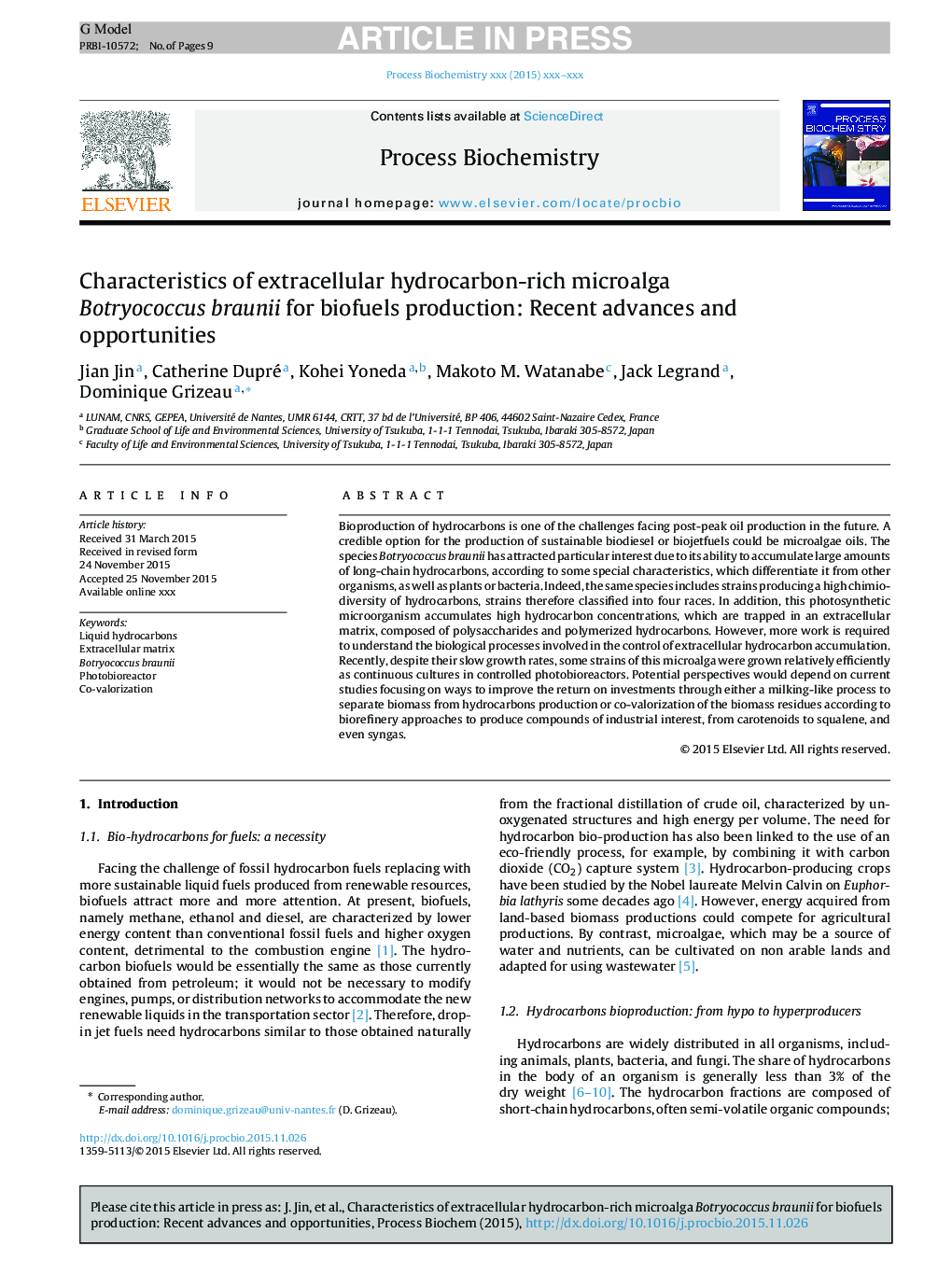| Article ID | Journal | Published Year | Pages | File Type |
|---|---|---|---|---|
| 4755161 | Process Biochemistry | 2016 | 9 Pages |
Abstract
Bioproduction of hydrocarbons is one of the challenges facing post-peak oil production in the future. A credible option for the production of sustainable biodiesel or biojetfuels could be microalgae oils. The species Botryococcus braunii has attracted particular interest due to its ability to accumulate large amounts of long-chain hydrocarbons, according to some special characteristics, which differentiate it from other organisms, as well as plants or bacteria. Indeed, the same species includes strains producing a high chimiodiversity of hydrocarbons, strains therefore classified into four races. In addition, this photosynthetic microorganism accumulates high hydrocarbon concentrations, which are trapped in an extracellular matrix, composed of polysaccharides and polymerized hydrocarbons. However, more work is required to understand the biological processes involved in the control of extracellular hydrocarbon accumulation. Recently, despite their slow growth rates, some strains of this microalga were grown relatively efficiently as continuous cultures in controlled photobioreactors. Potential perspectives would depend on current studies focusing on ways to improve the return on investments through either a milking-like process to separate biomass from hydrocarbons production or co-valorization of the biomass residues according to biorefinery approaches to produce compounds of industrial interest, from carotenoids to squalene, and even syngas.
Related Topics
Physical Sciences and Engineering
Chemical Engineering
Bioengineering
Authors
Jian Jin, Catherine Dupré, Kohei Yoneda, Makoto M. Watanabe, Jack Legrand, Dominique Grizeau,
